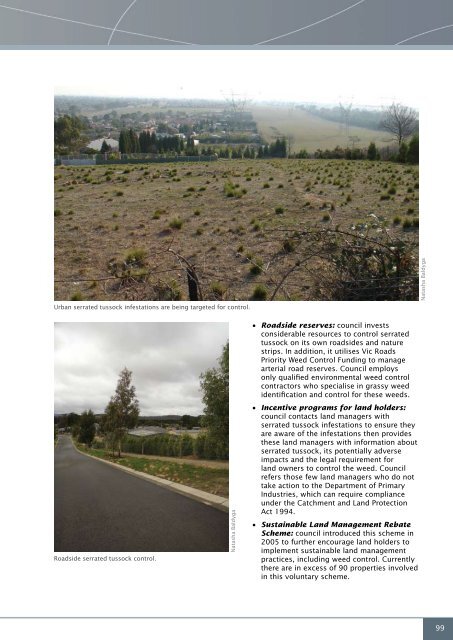Section 5 Case studies - Weeds Australia
Section 5 Case studies - Weeds Australia
Section 5 Case studies - Weeds Australia
You also want an ePaper? Increase the reach of your titles
YUMPU automatically turns print PDFs into web optimized ePapers that Google loves.
Urban serrated tussock infestations are being targeted for control.<br />
Natasha Baldyga<br />
Roadside serrated tussock control.<br />
Natasha Baldyga<br />
• Roadside reserves: council invests<br />
considerable resources to control serrated<br />
tussock on its own roadsides and nature<br />
strips. In addition, it utilises Vic Roads<br />
Priority Weed Control Funding to manage<br />
arterial road reserves. Council employs<br />
only qualified environmental weed control<br />
contractors who specialise in grassy weed<br />
identification and control for these weeds.<br />
• Incentive programs for land holders:<br />
council contacts land managers with<br />
serrated tussock infestations to ensure they<br />
are aware of the infestations then provides<br />
these land managers with information about<br />
serrated tussock, its potentially adverse<br />
impacts and the legal requirement for<br />
land owners to control the weed. Council<br />
refers those few land managers who do not<br />
take action to the Department of Primary<br />
Industries, which can require compliance<br />
under the Catchment and Land Protection<br />
Act 1994.<br />
• Sustainable Land Management Rebate<br />
Scheme: council introduced this scheme in<br />
2005 to further encourage land holders to<br />
implement sustainable land management<br />
practices, including weed control. Currently<br />
there are in excess of 90 properties involved<br />
in this voluntary scheme.<br />
99

















